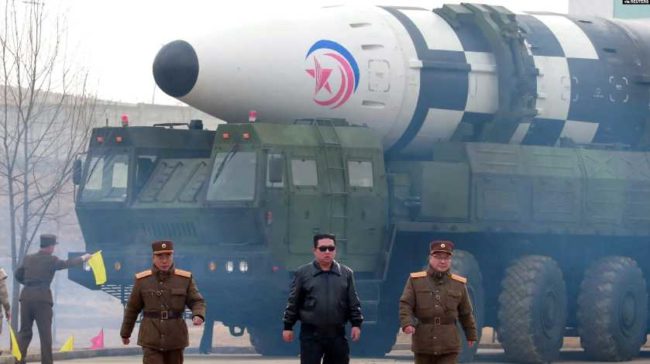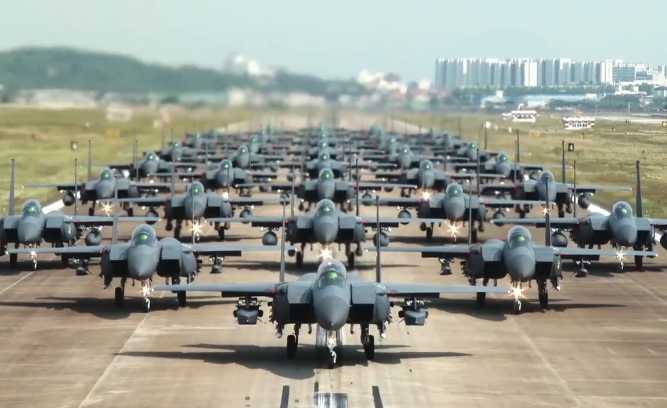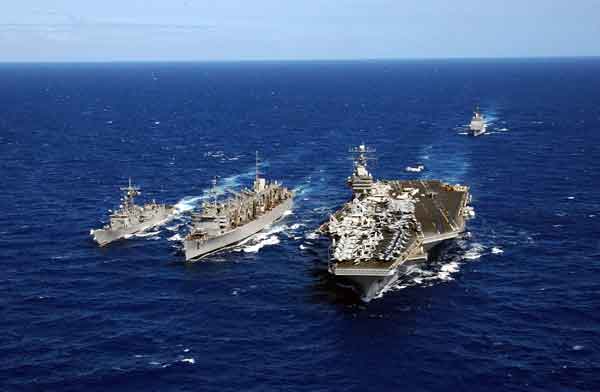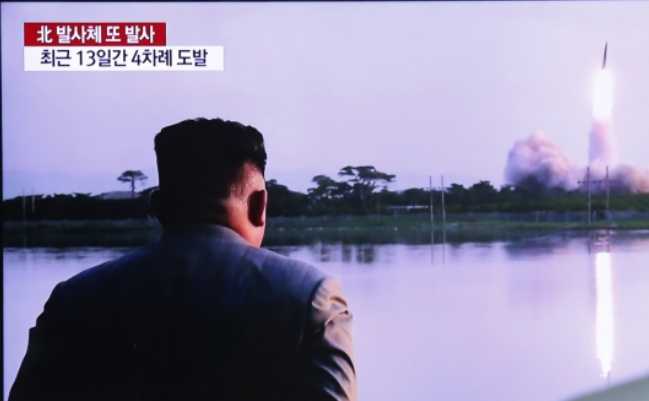
SEOUL, SOUTH KOREA — A U.S. aircraft carrier has neared the coast of South Korea for the first time since 2017, the latest show of U.S. military strength following North Korea’s recent long-range missile test.
The USS Abraham Lincoln carrier strike group arrived east of Ulsan, a southeastern South Korean city, and will likely stay there for three to five days, the Yonhap news agency reported Tuesday.
Citing an unnamed U.S. official, the Reuters news agency reported the carrier strike group is in the East Sea, also known as the Sea of Japan, conducting exercises with Japanese forces “to reassure allies and partners in the region.”
At a briefing, a South Korean military spokesperson said he was aware the U.S. carrier was in international waters near South Korea, but that it would be inappropriate to comment further on a U.S. military asset.
The United States has not sailed an aircraft carrier off the coast of Korea since late 2017, when relations with North Korea were particularly tense.
Washington and Pyongyang now appear headed for another turbulent period.
In January, North Korea conducted a record number of missile launches. Last month, it tested an intercontinental ballistic missile for the first time since 2017.
U.S. officials have warned that North Korea could soon launch another missile, or even conduct a nuclear test, possibly as soon as this week, when North Korea celebrates the birth anniversary of founding leader Kim Il Sung.
Another point of tension may come later this month, when the United States and South Korea are set to hold their regular springtime joint military exercises.
Since 2018, the two allies have scaled back or spread out joint drills to preserve the chances for diplomacy with North Korea and because of the coronavirus pandemic.[content id=”79272″]
But as North Korea tests bigger weapons, the United States and South Korea have displayed more of their own military might.
Last month, the U.S. stepped up air defense drills in South Korea and conducted an aircraft carrier exercise in the Yellow Sea off Korea’s west coast.
Immediately following North Korea’s ICBM test, South Korea tested five of its own missiles in what it called a “demonstration of our ability and willingness to respond immediately and impose punishment.”
The South Korean hardware used in that display had been “pre-selected and propositioned and choreographed,” according to a U.S. source with knowledge of alliance plans. The source told VOA last month that future drills could include strategic bombers, fifth-generation fighter jets, and an aircraft carrier strike group in Korean waters.
South Korean President-elect Yoon Suk-yeol, who takes office next month, supports the resumption of large-scale military exercises with the United States. But South Korean officials say the nature of this month’s drills will be decided by the current administration in Seoul.
North Korea regularly uses the drills as an occasion to lash out at the United States and South Korea. Analysts expect this time around to be no different, saying the drills could provide a pretext for North Korea to justify major weapons tests it had already planned.
“North Korea’s been on a consistent path toward restarting the tests and development of their weapons since the better part of last year,” said J. James Kim, a researcher at Seoul’s Asan Institute for Policy Studies.
The presence of the U.S. aircraft carrier, Kim said, won’t change North Korea’s trajectory. “[But] it’s something they will talk about. It’s part of the rhetoric,” he said.
North Korea has been systematically working through a wish list of strategic weapons laid out last year by its leader, Kim Jong Un. The list includes tactical nuclear weapons, hypersonic missiles, and ICBMs that can travel 15,000 kilometers.
Meanwhile, North Korea has rejected invitations by U.S. officials to resume nuclear talks. Negotiations between Kim and former U.S. President Donald Trump broke down in 2019 over disagreements on how to pace sanctions relief with steps to dismantle North Korea’s nuclear program.
[content id=”52927″][content id=”79272″]








